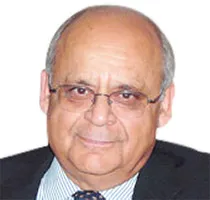The Islamic world, at the end of this week, looks like a series of boiling cauldrons from Dhaka to Kabul through to Istanbul and Baghdad. Islamist rage depicts itself equally violently in killing other Muslims as it does infidels. This — Islamist terror — is the common thread between terrorist acts in Mumbai, Paris, Brussels, Orlando and all over Afghanistan. From Syria-Iraq, the scourge has spread to Libya and will reach out to the rest of Africa, Europe and even the US.
Let us make no mistake that Islamist terror is thriving globally. A section of the Muslims is using extreme violence to terrorise fellow Muslims. Yet, the other hard reality is that hundreds of thousands of Muslims are willing to die and kill in the name of Islam as that see that as the way to paradise.
The other issue is whether, in all this, the Dhaka attack is a manifestation of ISIS’s presence or an example of local radical groups using the ISIS brand to seek publicity through their gruesome acts. It is doubtful if ISIS have sent their CEOs to manage things in Bangladesh. What, however, is more likely is that those Bangladeshis who had gone to Syria and Iraq have returned and are now willing to be used by one or more of the several radical organisations that still exist in the country. These could be independent acts replicated all over the world. They are more like franchises than actual branches of the main group. It is a kind of common discourse with groups acting under peer pressure knowing that the rest of us do not have an adequate reply. Drones will kill but they do not prevent the birth of other jihadists.
To understand where the world stands today perhaps a short recap of recent history is necessary. The game was played in several playing fields. Vietnam had been a Cold War disaster for the US and an early reprieve was necessary. Proxy wars in Africa had not delivered satisfactorily and Iran had slipped out of the US orbit. Brezhnev provided the opportunity to the US in December 1979 when the Soviet Union invaded Afghanistan. For the first time, the US used religion and not democracy and human rights as weapons when the Afghan
jihad was launched. And for the first time in modern history, Muslims from different parts of the
ummah got together to battle the Evil Empire. Ultimately, an exhausted, over-stretched Soviet Union withdrew and the Afghan mujahideen thought this was the result solely of their bravery and Islamic faith. No credit was given to the US contribution for this victory.
The 1990s were different; the US lost interest in the region. The
jihadi presumed he had inherited the world because of his superior religion. When this did not happen, the mullah reverted with great vehemence to promising paradise in the other life to be attained through war and dying for the faith. Theological orthodoxy has been the ploy since then.
The US administration allowed Pakistan to develop its nuclear capability when it winked at Zia ul-Haq’s efforts to nuclearise. Pakistan launched its proxies in India (and later in Afghanistan) in the 1990s confident that it could use terror as a weapon under a nuclear umbrella. The US had fought an inconclusive war in Iraq; Saddam Husain continued to be the ruler and the Americans were seen as occupation forces in Saudi Arabia. Al Qaeda was born and Osama bin Laden swore to cleanse the Holy Land of infidel forces. September 11, 2001 brought the US back into West Asia with all its might and instead of concentrating on eradicating the threat in Afghanistan and Pakistan, Washington once again diverted its attention to Iraq. The world knows what happened there and how.
< style="color: #163449;">Arab winter, not spring
Iran emerged as the strongest force in the region. The Arab Spring in Iran-backed Syria turned into a long cold bitter winter. ISIS was officially born in June 2014 when Abu Bakr Baghdadi made his sole appearance and announced the ‘caliphate’.
This is not to say that ISIS or the Al Qaeda are solely the result of US policies and interests. Local dictators and monarchs have contributed to this by suppressing any attempt at collective emancipation of their people and denied them any hope of power sharing. ISIS was helped in its phenomenal rise by the Saudis and the Qataris in their regional and sectarian battles against Iran. But even they did not expect the group to be so successful in its efforts at state-building. In fact, the caliphate would be a great danger to all the Muslim allies of the West in the region. There may be some truth in reports that the Iranians and the Saudis secretly met in an effort to try and dissolve the caliphate. Turkey tried to play the dangerous game in several ways with and against ISIS in order to contain the Kurds. The Istanbul airport bombing is the result of this double game, just as much as the recent onslaught in Baghdad with hundreds killed is obviously mean to exhibit its strength and discredit reports that its hold is slipping.
It is impossible to fully discuss here the complex nature of the relationships in West Asia, which is compounded further by the interests of other outside powers that drive the present chaos. The Al Qaeda-ISIS rivalry in West Asia is another factor that adds to the confusion. At some point they are conjoined twins — for instance Al Qaeda, ISIS, Boko Haram and the Kingdom of Saudi Arabia have the ‘Shahada’ as their banner. ISIS concentrates currently in its own region, followed by Europe and the US. It is a kind of a reverse-crusade.
While ISIS brutality is particularly frightening, there are two factors that cause greater concern. One, the deliberate use of certain Quranic verses by the ISIS to justify its brutality is accepted by a section of Muslims in different parts of the world. This frightens others, especially non-Muslims whose knowledge about Islam is bound to be inadequate. The second is that we often make the mistake of assuming that others see themselves as we see them. While the rest of us assume that everyone considers ISIS to be evil incarnate, there are others who think otherwise. For us in India, we have the problem that confirmed Pakistani terrorist organisations like the Lashkar-e-Tayyaba plan a ‘Ghazwa-e-Hind’ and dream of establishing three caliphates in India.
This fits admirably with the dreams of the Pakistani military mindset that seeks parity with India through confrontation. (Both share the same motto — ‘Jihad in the name of Allah’). Pakistani terror outfits dreamt of caliphates in India decades before Abu Bakr Baghdadi announced his caliphate in Iraq two years ago.
ISIS conceivably has no ethnic Arab presence or even interest in our region apart from the usual rhetoric. Bangladesh and Pakistan have Syria-Iraq returnees in larger numbers, who could be the vanguard of ISIS franchises. They would opt for the brand equity of ISIS and the latest attack in Dhaka was to register an international presence. Fortunately for India, we do not have those kinds of numbers in Syria or returning to wage jihad in their own country.
While one may be reasonably confident that ISIS will not make a mark in India, one should not be complacent and there is continued need to monitor the growing radicalisation of the youth in our major cities. Conscious efforts are being made to spread jihadist ideology. Inflammatory speeches and videos and violence against other sects are the usual ploys. There is little difference between Barelvi groups like the Raza academy and ISIS on theological principles such as blasphemy, apostasy and Shia Muslims. The number of Salafist mosques and madrassas all over the country has grown. These are funded illegally from abroad and tolerated and even, encouraged by state governments and the Centre. These institutions propagate Islamist supremacist ideologies that would ultimately lead to conflict.
We were lucky in Hyderabad with the recent arrest of 11 suspects alleged to be plotting terrorist strikes on behalf of ISIS. The problem is that for every terrorist plot disrupted, there could be several others in the pipeline. But to blame ISIS without evidence would be to create a scare. Since there is no real presence of ISIS capability, the only way this can happen in India is if Lashkar-e-Tayyaba wears the ISIS mask and begins to operate here. This will let Pakistan off the hook, the US would not have to push Pakistan any more and we will not be able to contemplate any action. India must not fall into the trap of changing the narrative about terrorism in the country without adequate proof.
This commentary first appeared in The Wire.
The views expressed above belong to the author(s). ORF research and analyses now available on Telegram! Click here to access our curated content — blogs, longforms and interviews.




 PREV
PREV



